Apps
Auto Added by WPeMatico
Auto Added by WPeMatico
The spread of COVID-19 has already had a significant impact on the mobile app industry, and that will continue in the years to come. According to a revised 2020-2024 market forecast from app intelligence firm Sensor Tower, a sizable increase in app downloads for industries like remote work and education will lead to a large surge in app installs for the early part of 2020 and beyond, despite other decreases in downloads for ridesharing and fast food apps. However, the expected economic downturn resulting from COVID-19 will somewhat dampen revenue growth in the years ahead, the report found. Despite this, mobile app spending worldwide will continue to grow and will even double by 2024.
Though COVID-19 is having an impact on the app stores’ revenue, growth remains strong.
Worldwide consumer spending in mobile apps is projected to reach $171 billion by 2024, which is more than double the $85 billion from 2019. This total, however, is about $3 billion (or 2%) less than the forecast the firm had released prior to the COVID-19 outbreak.
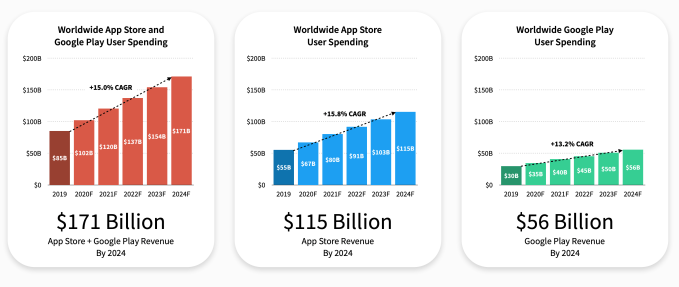
Still, it’s notable that even the slowest-growing regions on both app stores, Apple’s App Store and Google Play, will see revenue that’s over 80% higher than their 2019 levels by the year 2024.
The app stores will also hit several milestones during the next five years.
For starters, global spending in mobile apps will surpass $100 billion for the first time in 2020, growing at approximately 20% year-over-year to hit $102 billion.
Remarkably, the forecast also predicts that revenue from non-game mobile apps is expected to surpass that of mobile games for the first time by 2024, driven by the growth in subscriptions — particularly Entertainment, Social Networking, Music and Lifestyle app subscriptions.
By this time, mobile games will reach $97.8 billion, or around 41% of total consumer spending. The App Store will account for a sizable chunk of that spending, with ~$57 billion in mobile game revenue in 2024 versus Google Play’s ~$41 billion.

The App Store, not as surprisingly, will also maintain its sizable lead in consumer spending through 2024, accounting for 67% of total revenue across both it and Google Play. It will grow at a compound annual growth rate of 15.8% compared with Google Play’s 13.2%.
The top five countries by revenue will remain unchanged through 2024: China, U.S., Japan, Great Britain and Taiwan. China will continue to be a top market, despite regulations on app and game publishing, and will reach $35 billion in App Store spending alone by 2024.
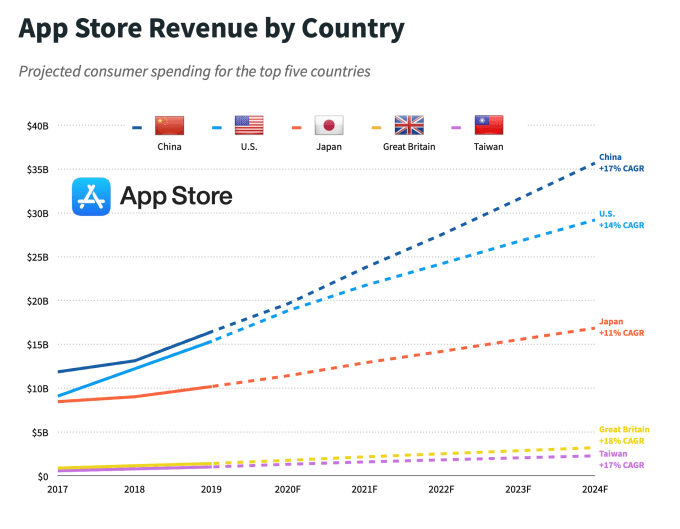
In terms of app downloads, the forecast predicts a lasting lift from the impacts of COVID-19.
By 2024, downloads will reach 183.7 billion, up 9% from the earlier forecast that came out before COVID-19 that had initially accounted for 7 billion fewer installs.
Much of this download growth is happening this year, when first-time app downloads are poised to reach 140.3 billion, up 22% from 2019.
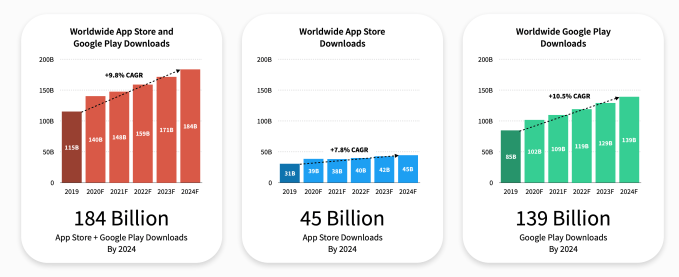
In addition to increases in non-game apps — like education, grocery delivery or remote work apps — mobile game downloads will grow 30% year-over-year in 2020 to reach 56.2 billion, compared with 10.4% growth between 2018 and 2019.
By 2024, mobile games will account for 41% of new installs, or 74.8 billion.
The early indication is that China will see a massive increase in downloads in 2020, particularly in the Games and Education categories. This follows a drop in downloads over the past few years, due to government regulatory practices, like the games licensing freeze.
The U.S. will see a similar spike in downloads this year, also due to COVID-19. For 2020, this will lead to a 27% year-over-year increase in downloads. But by 2021 and in the years that follow, growth will settle around 7% annually from 2021 to 2024 in this market.
During the forecast time frame, download growth will slow in India and Brazil, as the markets become more saturated, while growing in Latin America (up 58%) and Asian markets outside of China (up 82%).
Another notable milestone may take place in 2022, when the U.S. pulls ahead of China in terms of App Store downloads to reach number one. The U.S. has been narrowing the gap between the two in recent years, from 3.5 billion in 2017 to 1.1 billion in 2019. It will continue to close the gap during parts of 2020 and 2021, as well.
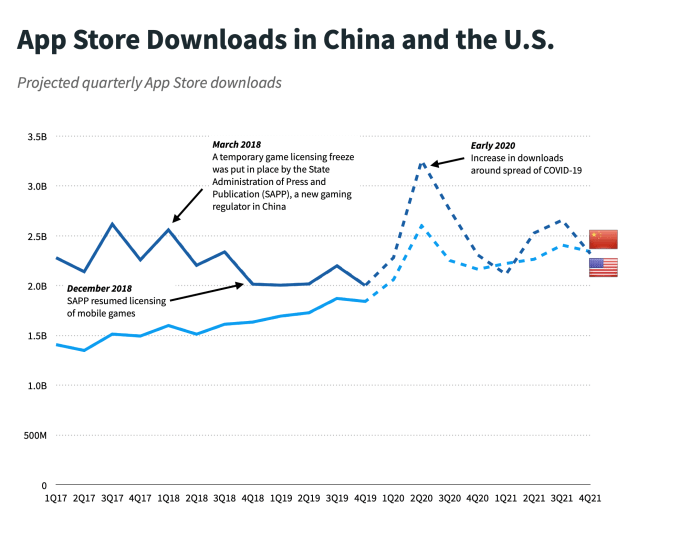
Other top countries for downloads in 2024, besides the U.S. and China, include Japan, Great Britain and Russia.
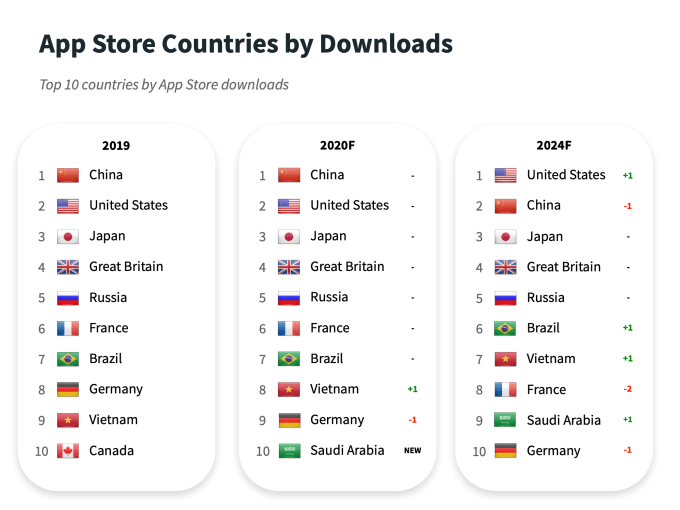
Powered by WPeMatico
Last fall, Spotify debuted a standalone Kids application, aimed at bringing kid-friendly music and stories to Spotify Premium Family subscribers, initially in Ireland. Today, that app is being made available broadly in the U.S. Canada and France, the company announced on Tuesday. The Kids app is still considered a “beta” as it arrives in these new markets, Spotify says. However, it’s been expanded with more songs, stories and other content since the original beta tests began.
The app is largely designed to boost sign-ups for Spotify’s top-tier subscription, the $14.99 (USD) per month Premium Family plan. This plan offers up to 6 people in the same household access to Spotify’s on-demand, ad-free music streaming service, each with their own personalized account. It also includes other exclusive features like Family Mixes, as well as parental controls, and now, the Spotify Kids application.
Spotify has long since realized its one-size-fits-all strategy didn’t work for families. It needed to build a unique experience separate from its flagship app in order to best cater to children — and to abide by the regulations around data collection and consent with regard to apps aimed at kids.
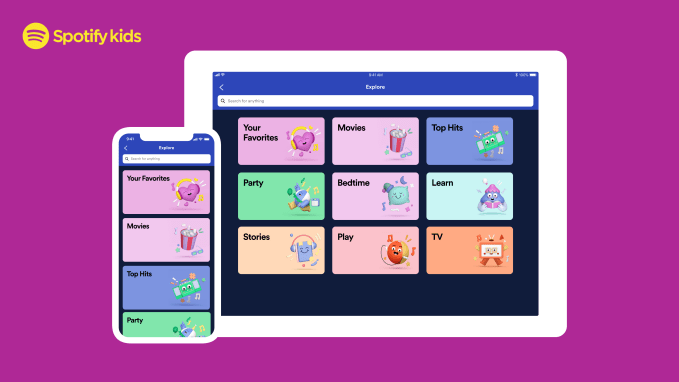
Spotify designed the Kids app from the ground up with the needs of both parents and kids in mind. For parents, it offers peace of mind that children won’t accidentally encounter inappropriate lyrics, for example, or songs with more adult themes. To ensure this remains the case, Spotify editors hand-curate the content on the Kids app by following a set of guidelines about what’s inappropriate for children. It doesn’t utilize algorithms to make selections about what’s included, the way the spinoff app YouTube Kids does.
Instead of being a fully on-demand product, Spotify Kids offers playlists for little ones focused around categories like Movies, TV, Stories, or various activities, like “Learn” or “Party,” among others. As kids grow older, they may also want to follow their favorite artists in the app.
The app can also be customized by age range. For younger kids, there’s character-based artwork and content aimed at the preschool set like singalongs or lullabies. Older kids will see a more detailed experience and have access to more popular tracks that are also age-appropriate.

The programmed playlists in Spotify Kids are curated by editors hailing from some of the most well-known brands in kids’ entertainment — including Nickelodeon, Disney, Discovery Kids, Universal Pictures, and others. They know what kids want and also what sells to the parents who pay.
Since its launch in Ireland, Spotify Kids has rolled out to Sweden, Denmark, Australia, New Zealand, the U.K., Mexico, Argentina, and Brazil.
It has also added more content since its original debut, says Spotify.
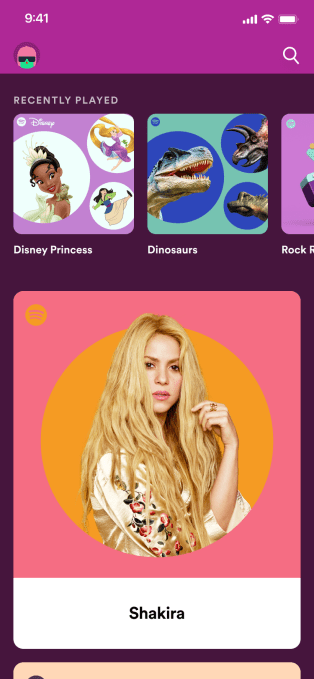
“We heard loud and clear that both parents and kids are craving more content in the app, so we’ve been increasing the number of tracks available. We’ve also heard from parents that they want even more control of the content, so we are working on some exciting new features,” noted Spotify’s Chief Premium Business Officer Alex Norström, in a statement.
The company isn’t yet going into detail about the upcoming additions, but says they’ll be focused on giving parents more control over the child’s experience. Typically, that would mean letting parents make more specific choices about what’s being streamed. But since parental controls are already available, it could mean letting parents pick specific songs or perhaps, block them. Time will tell.
Today the Spotify Kids app has over 8,000 songs in its catalog — 30% more than when it first arrived in Ireland, and growing.
It also has more local content, with 50% of the catalog in the app localized by market. Its collection of kid-friendly audiobooks and stories has grown as well, and the app now offers over 60 hours of stories, including fairy tales, classics, short stories, and stories from Disney Music Group.
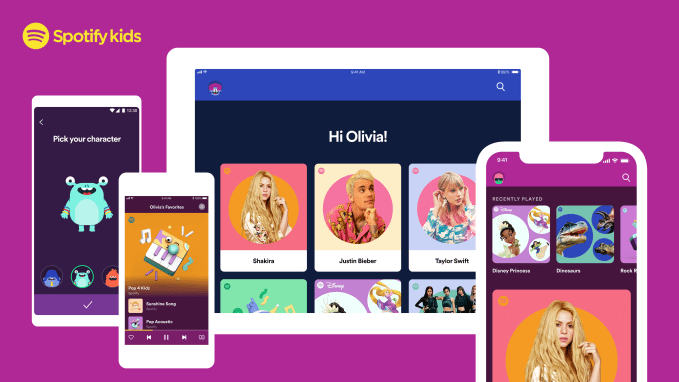
In response to user feedback, there’s also now more bedtime content like lullabies, calming music and sounds, and bedtime stories. (And yes, this finally means that Spotify parents will stop having their year-end Spotify Wrapped ruined by lullabies.)
In the U.S., Spotify Kids launches today with over 125 playlists (approximately 8,000 tracks.) In addition to mainstream kids’ music, the catalog includes Spanish-language, Country, Christian, Motown, and Soul Dance Party playlists. There’s also a Trolls World Tour playlist and another for Frozen.
In response to the COVID-19 outbreak, there’s also a new global playlist called “Wash Your Hands” which includes songs that teach kids to wash hands and to cough and sneeze properly. This includes the new song from Pinkfong “Wash Your Hands with Baby Shark.”
And to aid parents now educating children at home, there’s a “Learning” playlist hub where you’ll find songs about the ABC’s, counting, science and more.
The app is available today in the U.S., Canada, and France on iOS and Android. The app is a free download, but requires a Spotify Premium Family membership.
Powered by WPeMatico
If you can’t stop them, power them. That’s the strategy behind Snapchat App Stories, which launches today to let users show off their ephemeral content in other apps too. The first partners will let you post Stories to your dating profile in Hily, share them alongside [music] videos in Triller, watch them while screensharing in Squad, or give people a peek at your life in augmented reality network Octi. Developers can now sign up to add Stories to their apps.
Snapchat’s Stories format has been widely cloned, most famously by Instagram and Facebook, but with versions in various states of development for YouTube, Twitter, LinkedIn, SoundCloud, and more. Snapchat hopes to retain some grip on Stories and dissuade more copycats by letting developers bake the original version into their apps rather than building a bootleg attempt from scratch.
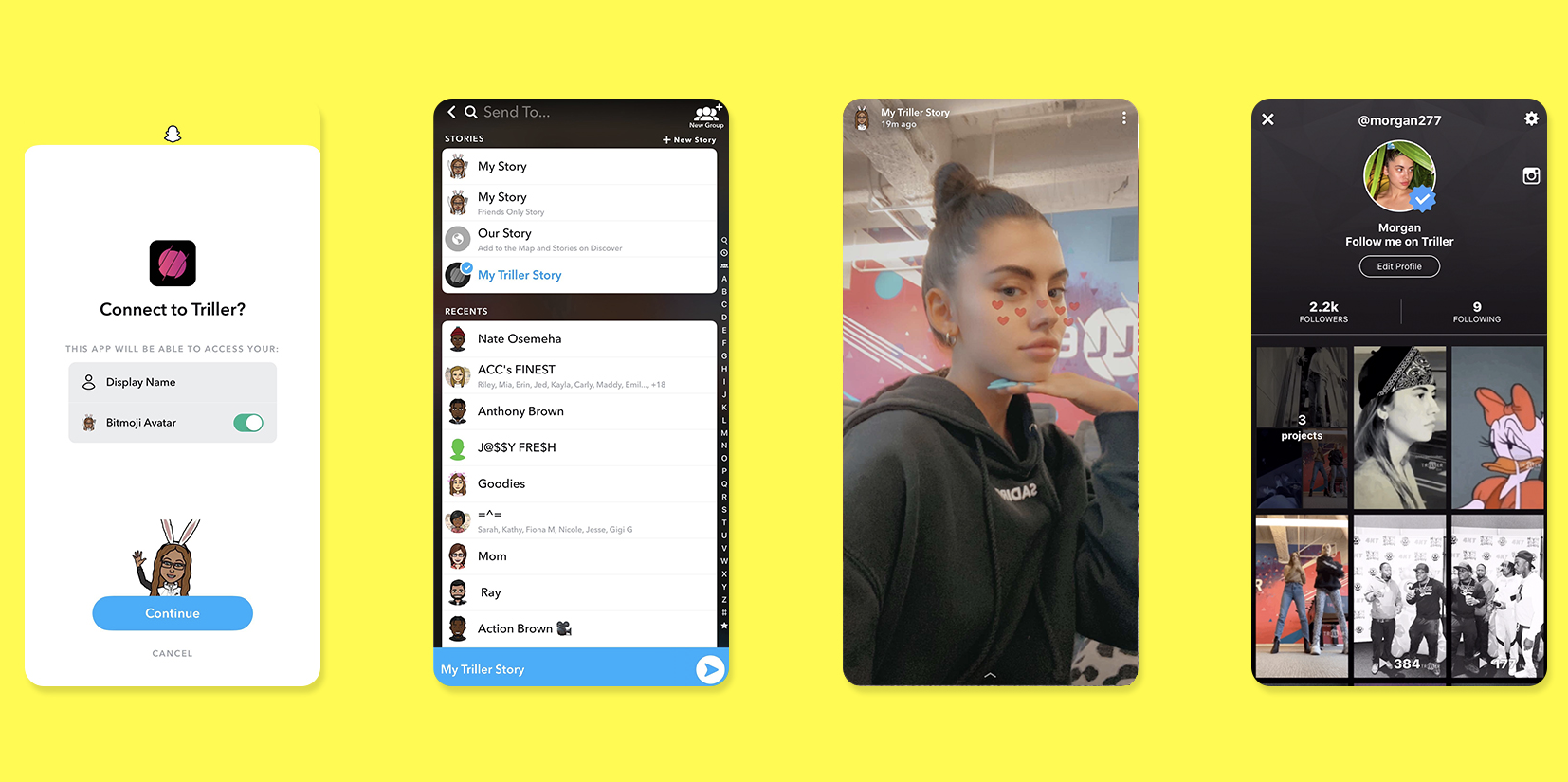
If you need Snapchat to share Stories to popular apps, that could boost content production plus subsequent viewership and ad impressions inside of Snapchat, remind people to shoot Stories, and make sure having a Snapchat account stays relevant. “We definitely think there’s a potential for monetization in App Stories but not yet” Snap’s VP of partnerships Ben Schwerin tells me. For now, Snapchat isn’t injecting ads into alongside Stories into other apps, though that’s clearly the plan.
“There are certain platforms out there that have decided they want to invest in building their own Stories product and their own camera, but it’s not a trivial thing to do. It takes resources and time. We think we can help developers do that” Schwerin explains. “Getting more people out there, regardless of age or where they live, comfortable using Stories probably makes them more likely to be able to pick up and enjoy Snapchat.”
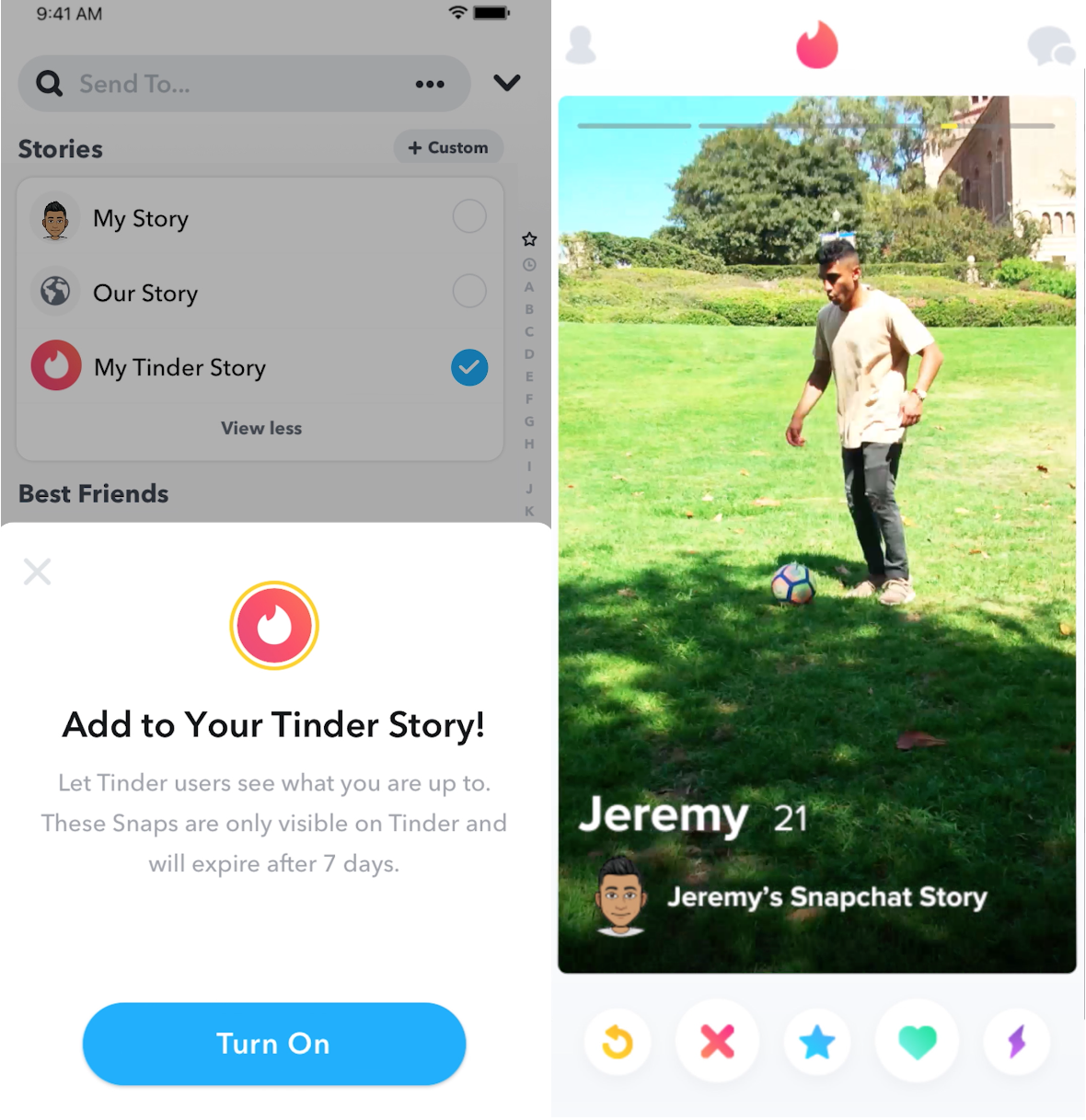
Snapchat initially announced the plan for App Stories at its Partner Summit exactly a year ago. Unfortunately, its second annual developer conference that was set for this week was cancelled due to coronavirus.
Though advertising spend may be reduced, at least the app has experienced an increase in usage while everyone shelters in place. That includes third-party apps built on its Snap Kit platform that lets developers piggyback on Snapchat’s login, Bitmoji, and camera effects.
“We continue to see incredible growth from established apps like Reddit and Spotify and TikTok, and from startups that are really building from the ground up on Snap Kit like Yolo” Schwerin reveals. “People are spending more time at home and less time with friends. We’re seeing increased usage of Snapchat.”
Snap Kit has allowed Snapchat to rally would-be copycats into a legion of allies as it fights to stave off the Facebook empire. That strategy combined with a high-performance rebuild of its Android app for the developing world led Snapchat’s share price to grow from $11.36 a year ago to a recent high of $18.98 before coronavirus dragged it almost all the way back down.
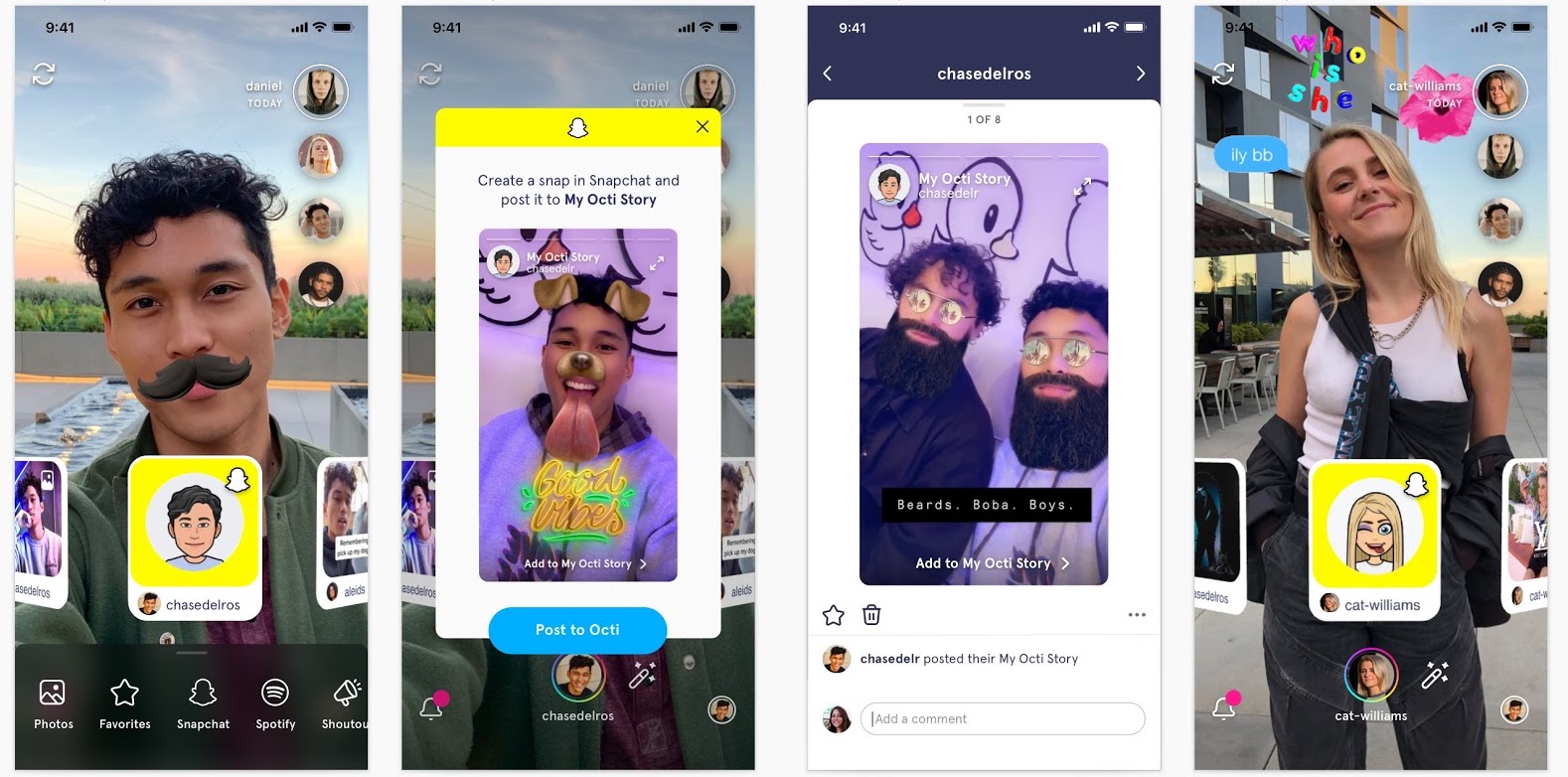
Now, when people shoot a photo or video in the Snapchat camera, they’ll get options to share it not just to their Story or Snap Map and the crowdsourced community Stories, but also to their Story within other apps integrated with Snap Kit. Users will see options to syndicate their Story to products equipped with App Stories where they’re already logged in.
Unlike on Snapchat where Stories disappear after 24 hours, they default to a 7-day expiration in other App Stories. That relieves users of having to constantly post ephemeral Snaps to keep their dating or social app profiles stocked with biographical content.
In Hily, Snapchat Stories partially replaces the homegrown version it’d spun up in the meantime to show potential dates off-the-cuff looks at people’s lives. In Triller, users can tap on a content creator’s profile pic to see biographical Stories instead of just their polished music videos. In Squad, users can co-watch Stories along with other things to screenshare. And in Octi, users can see someone’s Snapchat Story amongst other hidden content revealed by its augmented reality camera.
One app missing is Tinder, which Snapchat originally previewed as its launch partner at the App Stories reveal last year. Tinder is using Snapchat’s Bitmoji stickers, but may have gotten cold feet about Stories. The fact that Snap is only now launching App Stories, and still hasn’t officially launched Ad Kit that lets it inject its ads into other apps and split revenue with developers, shows it’s taking time to adjust to its platform strategy after years of shunning outside integrations. It still won’t reveal the revenue percentage split it’s applying to Ad Kit.
For Snapchat to gain momentum it needs two things: a constant influx of new users, eager to use its augmented reality camera and Bitmoji wherever they’re available, and more impressions to monetize with ads after Instagram stole the Stories use case for untold millions of older users. App Stories could help with both.
“The proliferation of stories as the primary way to share video content on mobile we think is a good thing” Schwerin concludes. But Snap has sat by idly as it’s served as the R&D lab for Facebook’s product. Now Snapchat needs to own the viewership and the ad dollars that Stories generate everywhere other than Facebook. Just coining the concept doesn’t bring in cash.
Powered by WPeMatico
Disney said on Tuesday that it will launch its streaming service, Disney+, in India on April 3. The service, available globally in about a dozen markets, will launch in India on Hotstar, one of the most popular on-demand streaming services in the country that is also owned by Disney.
The company said it is raising the yearly subscription cost of the combined entity, Disney+Hotstar, to Rs 1,499 ($20), up from Rs 999 ($13.2) that it previously charged for its most premium content on Hotstar. TechCrunch reported last year that Disney+ will launch in India in 2020 and will increase its subscription cost.
Hotstar, which claimed to have amassed 300 million monthly active users during the cricket season in India last year, would continue to offer an ad-supported service that it will offer to users without a fee. But it is increasing the cost of both of its premium tiers.
Disney is offering a more affordable yearly tier that costs Rs 399 ($5.3) — up from Rs 365 — that will include movies from the Marvel Cinematic Universe, access to live sporting events and a wide catalog of movies and shows, and original shows produced by Hotstar. It will not include Disney+ Originals.
The $20 yearly subscription tier will offer over 100 series and 250 superhero and animated titles, including Disney+ Originals and shows from HBO, Fox, and Showtime, the company said. It will also include access to everything that Disney+Hotstar customers are availing at $5.3 tier.
All existing subscribers will be automatically upgraded to their respective new subscription plan and will be charged the new rates upon renewal, the company said.
“With the success of Hotstar, we ushered in a new era for premium video streaming in India. Today, as we unveil Disney+ Hotstar, we take yet another momentous step in staying committed to our promise of delivering high-quality impactful stories for India that have not only entertained but also made a difference in people’s lives, a promise that is even more meaningful in challenging times such as this,” said Uday Shankar, President of The Walt Disney Company APAC and Chairman, Star & Disney India, said in a statement.
“We hope the power of Disney’s storytelling, delivered through Hotstar’s technology, will help our viewers find moments of comfort, happiness and inspiration during these difficult times,” he added.
The company had originally planned to launch Disney+Hotstar in India on March 29, but it began testing the service in the country weeks prior to that.
But as the coronavirus outbreak prompted New Delhi to order a nation-wide lockdown, which put a halt to public events including the cricket tournament Indian Premier League (IPL), Disney postponed the launch of Disney+Hostar in India.
IPL cricket tournament is by far the biggest attraction on Hotstar. According to people familiar with the matter, the months following IPL saw Hotstar’s userbase drop from 300 million to about 60 million last year.
If the IPL cricket tournament, which has been postponed until mid next month, is further delayed — or cancelled — it might significantly hurt Hotstar’s relevance and financials.
If that wasn’t enough, some of the shows and movies on Hotstar may disappear soon as one of its partners, Hooq, filed for liquidation last week.
Disney was also recently criticized for blocking and censoring episodes of John Oliver’s “Last Week Tonight.” Hotstar did not stream a recent episode of Oliver’s show that was critical of India’s Prime Minister Narendra Modi and some of his policies. Hotstar has also edited out jokes from Oliver’s show that mocked Disney.
Oliver called out Disney and Hotstar for the censorship. Disney has not responded to multiple requests for comment on this matter.
Powered by WPeMatico
Facebook Messenger could soon automatically tell your closest friends you’re at the gym, driving or in Tokyo. Messenger has been spotted prototyping a ported version of the Instagram close friends-only Threads app’s Auto Status option that launched in October.
The unreleased Messenger feature would use your location, accelerometer and battery life to determine what you’re up to and share it with a specific subset of your friends. But instead of sharing your exact coordinates, it overlays an emoji on your Messenger profile pic to indicate that you’re at the movies, biking, at the airport or charging your phone.
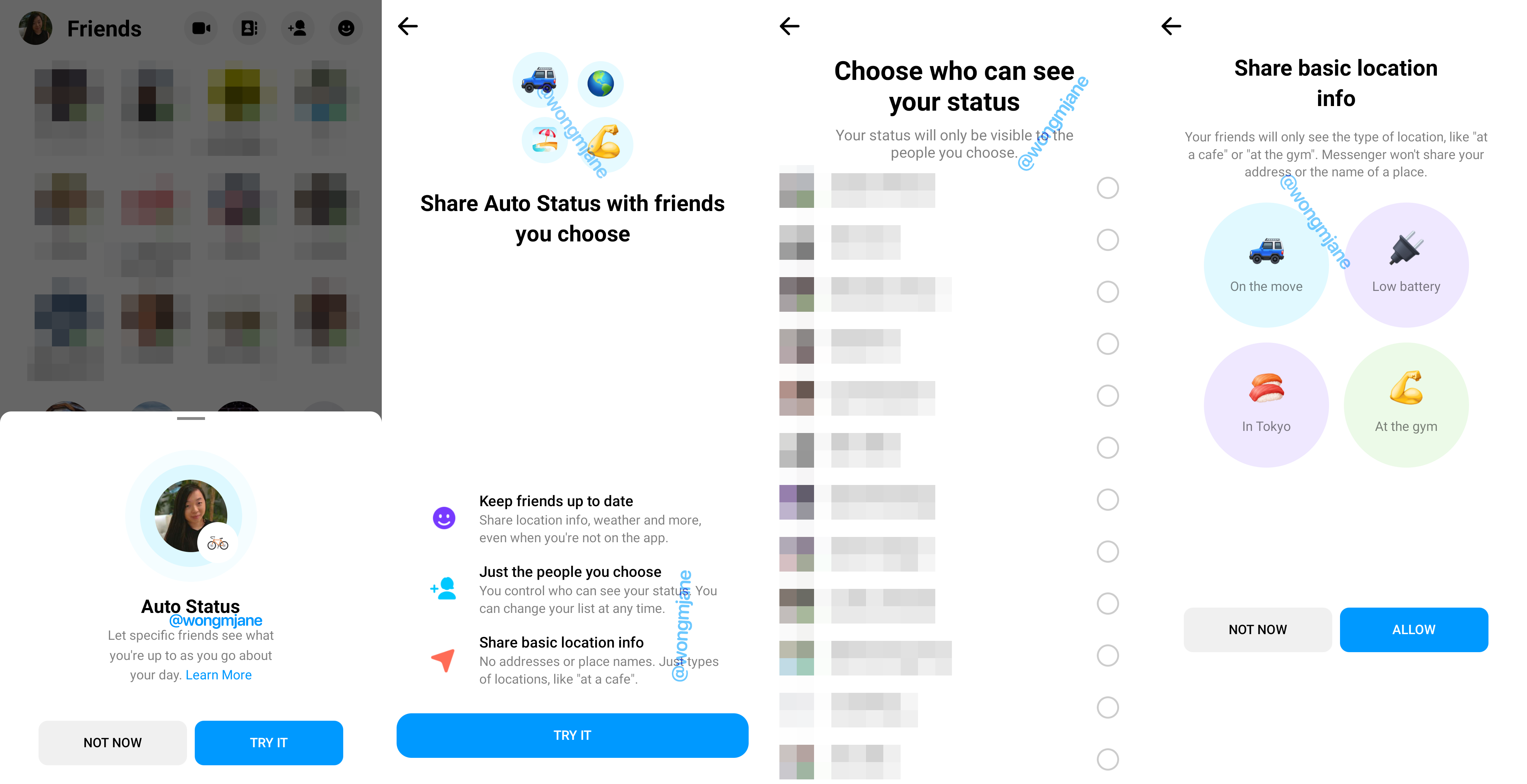
It’s unclear if or when Messenger might launch Auto Status. But if released, the feature could become Facebook’s version of the AOL Away Message, allowing people to stay in closer touch without the creepiness of exact location sharing. It might also help people coordinate online or offline meetups by revealing what friends are up to. Auto Status creates an ice breaker, so if it says a close friend is “at a cafe,” or “chilling,” you could ask to hang out.
Back in 2016, I wrote about how exact location sharing had failed to become mainstream because knowing where someone is doesn’t tell you their intention. What matters is whether they’re free to interact with you, which none of the social networks offered.
A few products, like Down To Lunch and Free, came and went in the meantime. Snapchat’s Snap Map and its acquisition of Zenly both doubled down on precise location sharing, yet still we’re often stuck home wondering if anyone we care about is similarly bored and might want to hang out.
Facebook has been experimenting in this space since at least early 2018, when its manual Emoji Status was spotted. That allowed you to append an emoji of your choosing to your Messenger profile pic. Then in October, Facebook introduced Auto Status, but only in the Instagram side-app Threads.
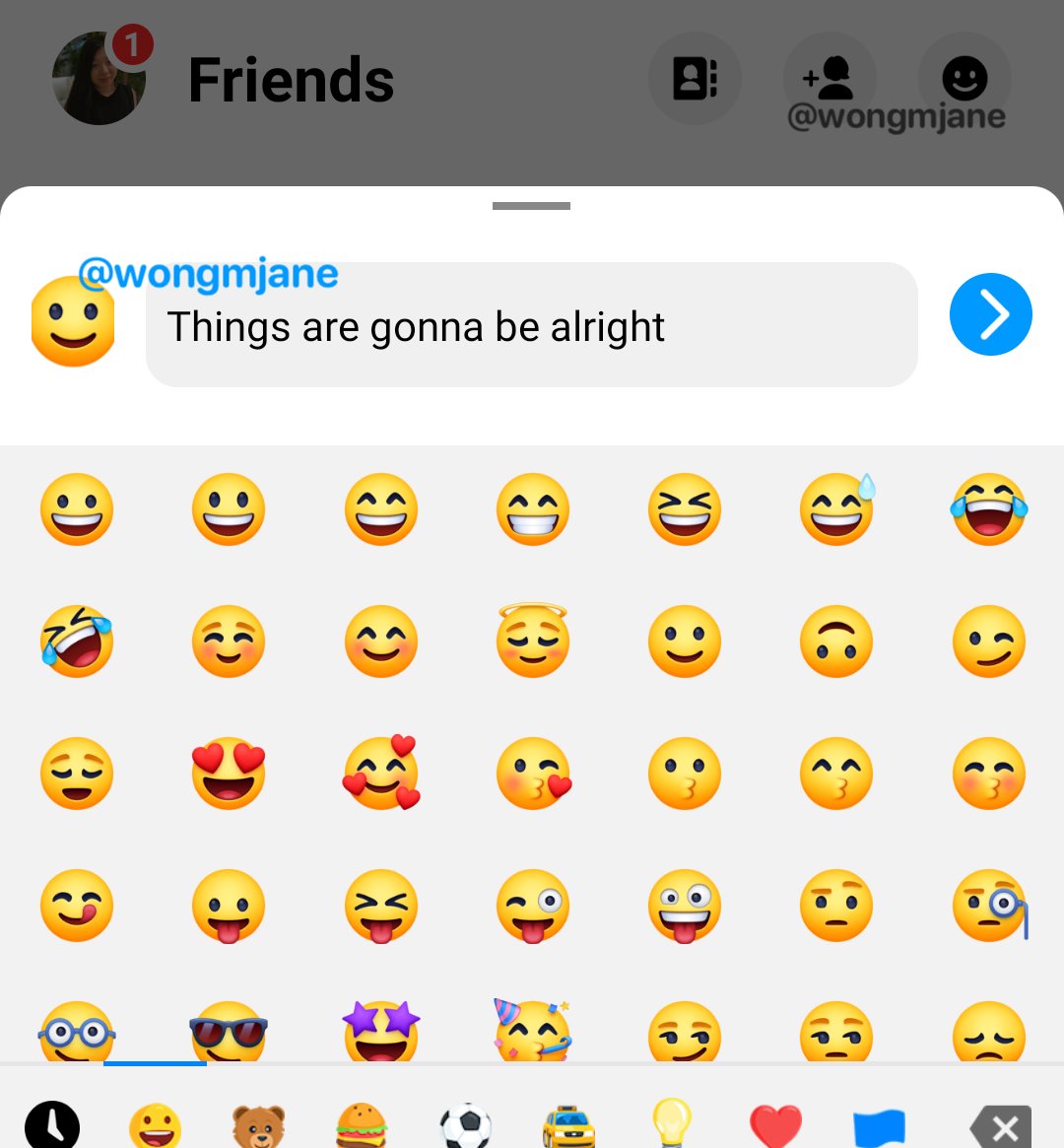
Some users were initially creeped out by the idea of Facebook relaying battery status. But Instagram director of Product Management Robby Stein explained to me that because you might not respond to a message if your phone goes dead or is left on the charger, it’s useful info to relay to friends who might be wondering what you’re doing.
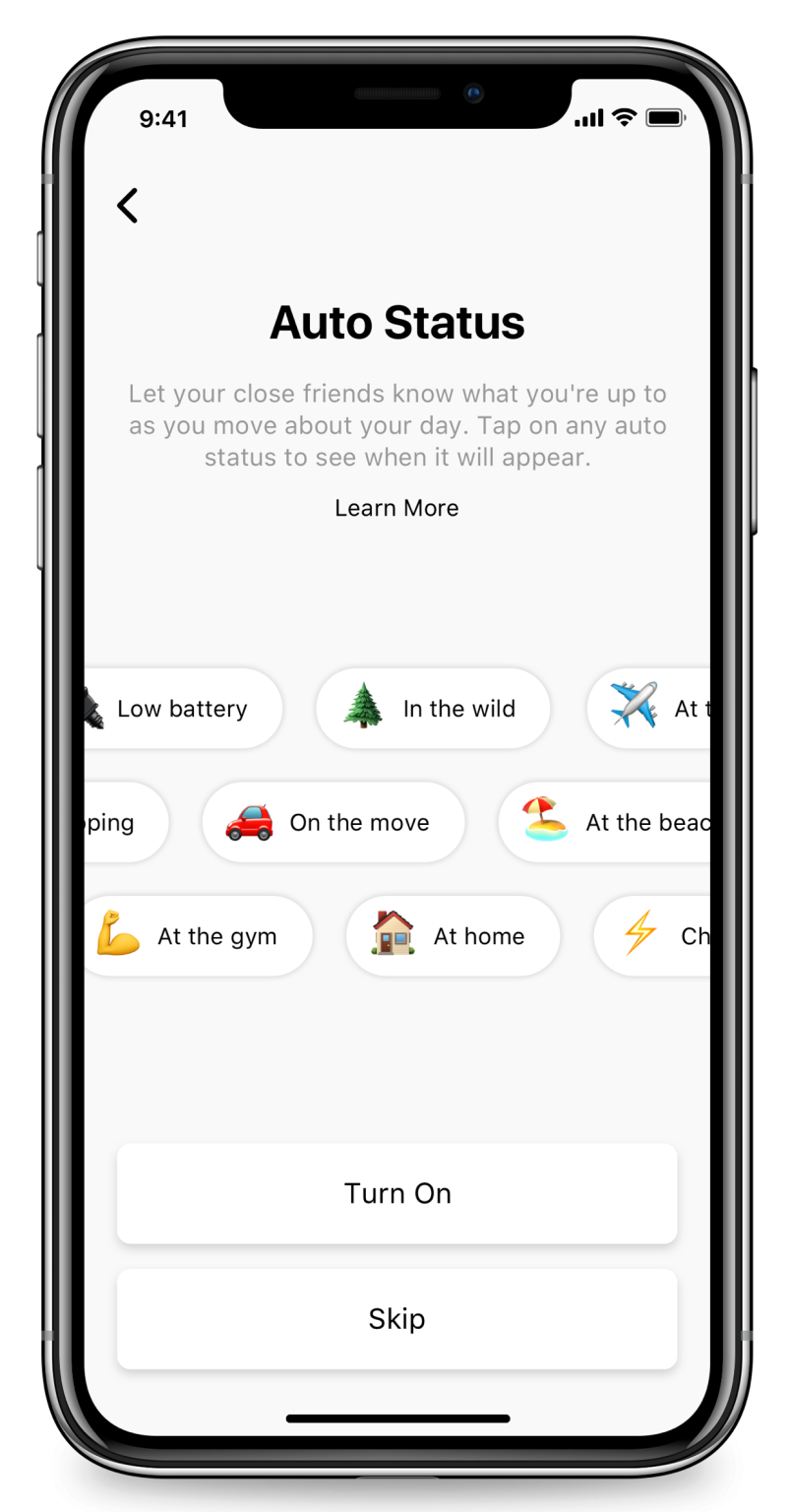 Then earlier this month, reverse engineering master and constant TechCrunch tipster Jane Manchun Wong revealed a new, unreleased version of Emoji Status hidden in Messenger’s Android code. Then today, Wong showed off how she similarly spotted Facebook trying to port Auto Status to Messenger. That would bring the feature to more than one billion monthly users compared to the relatively small base for Threads.
Then earlier this month, reverse engineering master and constant TechCrunch tipster Jane Manchun Wong revealed a new, unreleased version of Emoji Status hidden in Messenger’s Android code. Then today, Wong showed off how she similarly spotted Facebook trying to port Auto Status to Messenger. That would bring the feature to more than one billion monthly users compared to the relatively small base for Threads.
With Auto Status, you can “Let specific friends see what you’re up to as you go about your day. Share location info, weather, and more, even when you’re not in the app.” Auto Status is only visible to a special list of friends you can change at any time, similar to Instagram Close Friends. And the feature shares “no addresses or place names. Just types of locations, like “at a cafe.” Movement (driving, biking, walking), venue (at the movies, airport), cities (in Tokyo) and battery status (low battery, charging) are some of categories of what Auto Status shares.
A Facebook Messenger communications representative confirmed to TechCrunch that the Auto Status feature was being prototyped by Messenger, noting that “We’re always exploring new features to improve your Messenger experience. This feature is still in early development and not externally testing.” The company also tweeted the statement.
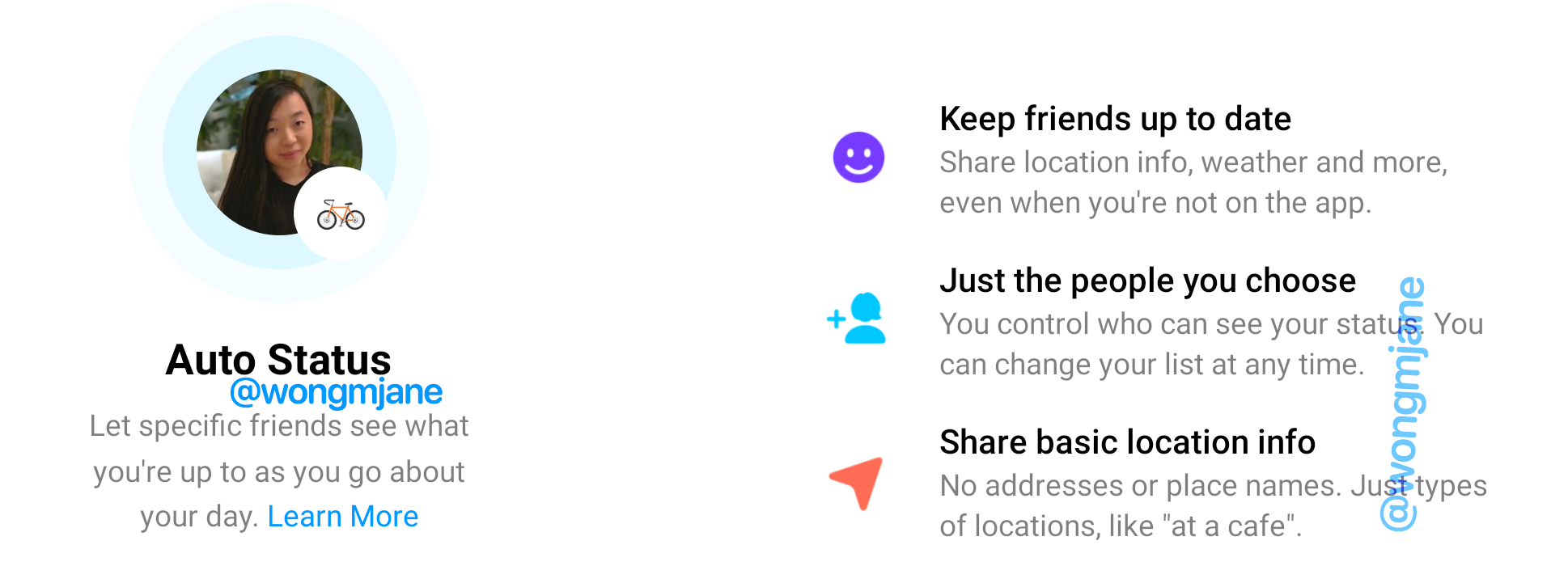
One of the biggest unsolved problems in social networking and messaging remains knowing whether friends are free to chat or hang out without having to ask them directly. Reaching out at the wrong time only to be ignored or rejected can feel awkward or intimidating, and can discourage connection later. But if you have a vague idea of what a close friend is up to, you can more deftly plan when to message them, and be more likely to get to spend time together in person or just online.
That could be a cure to the loneliness that endless feed scrolling by ourselves can leave us feeling.
Powered by WPeMatico
Welcome back to This Week in Apps, the Extra Crunch series that recaps the latest OS news, the applications they support and the money that flows through it all.
The app industry saw a record 204 billion downloads and $120 billion in consumer spending in 2019, according to App Annie’s “State of Mobile” annual report. People are now spending 3 hours and 40 minutes per day using apps, rivaling TV. Apps aren’t just a way to pass idle hours — they’re a big business. In 2019, mobile-first companies had a combined $544 billion valuation, 6.5x higher than those without a mobile focus.
In this Extra Crunch series, we help you keep up with the latest news from the world of apps, delivered on a weekly basis.
This week, we’re continuing our special coverage of how the COVID-19 outbreak is impacting apps and the wider mobile app industry as more COVID-19 apps appear — including one from Apple built in partnership with the CDC, among others. We also take a look at the gains made by social and video apps in recent weeks as people struggle to stay connected while stuck at home in quarantine. In other headlines, we dig into Instagram’s co-watching feature, the Google for Games conference news, Apple’s latest releases and updates, Epic Games expansion into publishing and more.
Powered by WPeMatico
We look at an in-depth screener app for COVID-19, U.S. stocks take another tumble and Apple extends its free trial for Final Cut Pro and Logic Pro. Here’s your Daily Crunch for March 27, 2020.
Stay safe and socially distanced this weekend!
1. Clearstep’s COVID-19 chat-based screener goes in-depth to preserve healthcare resources
There are a growing number of symptom checker and screening tools that you can use at home if you suspect you might have contracted the new coronavirus that is causing the global COVID-19 pandemic. Most of these are relatively simple, including three or four questions that cover the top reported symptoms experienced by anyone who has confirmed to have had the disease.
In contrast, chatbot-based symptom checking software startup Clearstep has created its own COVID-19 screener, which goes more in-depth to combine symptom checking with screening for potential exposure to the virus.
2. Stocks fall sharply Friday morning as the mid-week recovery falls short
The major American stock market indices are down sharply this morning at the open, with stocks falling after a multi-day rally helped shave some losses off their calendar-year results.
3. Apple extends free trials for its pro creative apps
Apple announced today that they are temporarily extending the free trials on Final Cut Pro X and Logic Pro X from 30 days to 90 days, giving potential customers stuck at home a longer window of time to try out the software. With this announcement, Apple joins a number of other software companies extending the free trials of their products in the midst of the COVID-19 crisis.
4. Yelp pauses GoFundMe Covid-19 fundraising after opt-out outcry
A fundraising program that Yelp and GoFundMe put in place this week to help local businesses impacted by the COVID-19 pandemic has been paused after public outcry over how it was rolled out — specifically, controversy over how the two provided no easy and quick way to opt out of the fundraising.
5. Smart telescope startups vie to fix astronomy’s satellite challenge
The stakes involved are high, with projects like Starlink (the satellite branch of SpaceX) potentially being central to the future of global internet coverage, especially as new infrastructure implements 5G and edge computing. At the same time, satellite clusters — whether from Starlink or national militaries — could threaten the foundations of astronomical research. (Extra Crunch membership required.)
6. Notarize to add 1,000 online notaries to address demand for remote transactions
The startup is partnering with the National Notary Association to verify notaries have been screened and have the necessary insurance or bonding. The service is available to Americans in all 50 states or abroad, but notaries must be physically located in Florida, Nevada, Texas or Virginia to join the platform.
7. Social Bluebook was hacked, exposing 217,000 influencers’ accounts
Social Bluebook, a Los Angeles-based company, allows advertisers to pay social media “influencers” for posts that promote their products and services. The company claims it has some 300,000 influencers on its books, but in October 2019, its entire backend database was stolen in a data breach.
The Daily Crunch is TechCrunch’s roundup of our biggest and most important stories. If you’d like to get this delivered to your inbox every day at around 9am Pacific, you can subscribe here.
Powered by WPeMatico
French startup Zyl has released a major update of its mobile app for iOS and Android. The app is all about finding long-forgotten memories of important life events in your photo library.
Zyl scans your photo library and magically finds photos that matter. Every day, the app sends you a notification to tell you that you can unlock a new memory — a new Storyl. It instantly brings you back to that special day with an automatically generated story. All your photos are already stitched together, the app is just waiting for you.
With today’s update, Zyl lets you share your memory with your friends and family members who were part of this past event. They can contribute and add their own photos from their photo library.
Sure, each user could have created their own version of this story. But collaborative stories lead to something more powerful. Years after celebrating something, Zyl brings you closer to your friends right now.

Behind the scene, the company has been working on machine learning-powered algorithms to understand the emotions behind your photo. The company has a privacy-focused approach. It scans your photo library on your devices — your photos aren’t uploaded to Zyl’s servers. You don’t need to create a user account either.
Zyl doesn’t want to overwhelm you with a ton of content at once. You have to wait 24 hours to unlock a new Storyl. That slow-paced approach sets it apart from Instagram, where you have to frenetically tap on the screen to gobble as much content as possible.
Just like with your memories, you have to make room for new memories and cherish the most important ones. In the future, Zyl could remove some of your old Storyls to let you focus on the ones that matter most. If you haven’t shared it with a friend, chances are it wasn’t that important.
Instead of traditional comments, the startup is also working on a way to add some meaningful content on top of your photos. Again, Zyl is focused on emotions and generating a good vibe. For me, it has been a great way to forget about the news cycle for a few minutes.
Powered by WPeMatico
CRM has for years been primarily a story of software to manage customer contacts, data to help agents do their jobs, and tools to manage incoming requests and outreach strategies. Now to add to that we’re starting to see a new theme: apps to help agents track how they work and to work better.
Today comes the latest startup in that category, a Dutch company called Kaizo, which uses AI and gamification to provide feedback on agents’ work, tips on what to do differently, and tools to set and work to goals — all of which can be used remotely, in the cloud. Today, it is announcing $3 million in a seed round of funding co-led by Gradient — Google’s AI venture fund — and French VC Partech.
And along with the seed round, Kaizo (which rebranded last week from its former name, Ticketless) is announcing that Christoph Auer-Welsbach, a former partner at IBM Ventures, is joining the company as a co-founder, alongside founder Dominik Blattner.
Although this is just a seed round, it’s coming after a period of strong growth for the company. Kaizo has already 500 companies including Truecaller, SimpleSurance, Miro, CreditRepairCloud, Justpark, Festicket and Nmbrs are using its software, covering “thousands” of customer support agents, which use a mixture of free and paid tools that integrate with established CRM software from the likes of Salesforce, Zendesk and more.
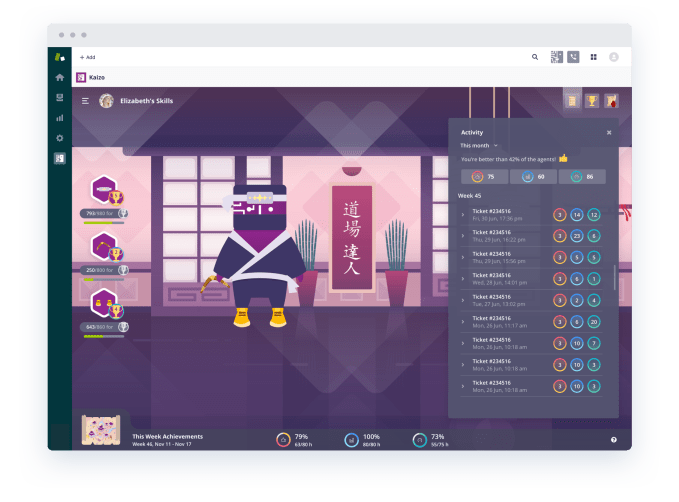
Customer service, and the idea of gamifying it to motivate employees, might feel like the last thing on people’s minds at the moment, but it is actually timely and relevant to our current state in responding to and living with the coronavirus.
People are spending much more time at home, and are turning to the internet and remote services to get what they need, and in many cases are finding that their best-laid plans are now in freefall. Both of these are driving a lot of traffic to sites and primarily customer support centers, which are getting overwhelmed with people reaching out for help.
And that’s before you consider how customer support teams might be impacted by coronavirus and the many mandates we’ve had to stay away from work, and the stresses they may be under.
“In our current social climate, customer support is an integral part of a company’s stability and growth that has embraced remote work to meet the demands of a globalized customer-base,” said Dominik Blattner, founder of Kaizo, in a statement. “With the rise of support teams utilizing a digital workplace, providing standards to measure an agent’s performance has never been more important. KPIs provide these standards, quantifying the success, achievement and contribution of each team member.”
On a more general level, Kaizo is also changing the conversation around how to improve one’s productivity. There has been a larger push for “quantified self” platforms, which has very much played out both in workplaces and in our personal lives, but a lot of services to track performance have focused on both managers and employees leaning in with a lot of input. That means if they don’t set aside the time to do that, the platforms never quite work the way they should.
This is where the AI element of Kaizo plays a key role, by taking on the need to proactively report into a system.
“This is how we’re distinct,” Auer-Welsbach said in an interview. “Normally KPIs are top-down. They are about people setting goals and then reporting they’ve done something. This is a bottom-up approach. We’re not trying to change employees’ behaviour. We plug into whatever environment they are using, and then our tool monitors. The employee doesn’t have to report or measure anything. We track clicks on the CRM, ticketing, and more, and we analyse all that.” He notes that Kaizo is looking at up to 50 datapoints in its analysis.
“We’re excited about Kaizo’s novel approach to applying AI to existing ticket data from platforms like Zendesk and Salesforce to optimize the customer support workflow,” said Darian Shirazi, General Partner at Gradient Ventures, in a statement. “Using machine learning, Kaizo understands which behaviors in customer service tickets lead to better outcomes for customers and then guides agents to replicate that using ongoing game mechanics. Customer support and service platforms today are failing to leverage data in the right way to make the life of agents easier and more effective. The demand Kaizo has seen since they launched on the Zendesk Marketplace shows agents have been waiting for such a solution for some time.”
Kaizo is not the only startup to have identified the area of building new services to improve the performance of customer support teams. Assembled earlier this month also raised $3.1 million led by Stripe for what it describes as the “operating system” for customer support.
Powered by WPeMatico
MX Player, the on-demand video streaming service owned by India’s conglomerate Times Internet, is expanding to more than half a dozen new international markets including the U.S. and the U.K. to supply more entertainment content to millions of people trapped in their homes.
The Singapore-headquartered on-demand video streaming service, which raised $111 million in a round led by Tencent last year, said it has expanded to Canada, Australia, New Zealand, Bangladesh and Nepal in addition to the U.S. and the UK.
Like in India, MX Player will offer its catalog at no charge to users in the international markets and monetize through ads, Karan Bedi, chief executive of the service, told TechCrunch in an interview.
The streaming service, which has amassed over 175 million monthly active users in India, is offering locally relevant titles in each market, he said. This is notably different from Disney’s Hotstar expansion into select international markets, where it has largely aimed to cater to the Indian diaspora.
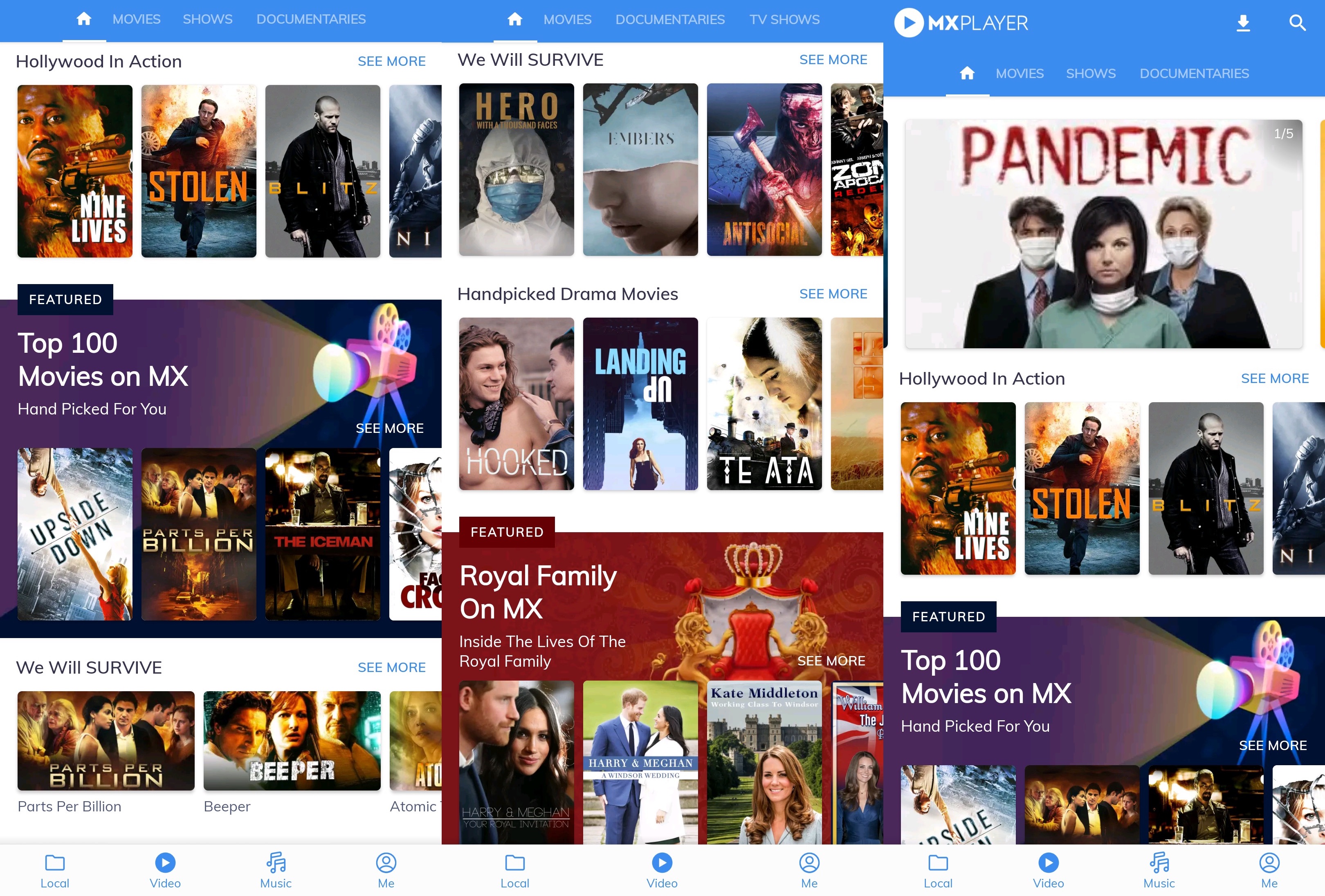
MX Player is not currently offering any originally produced titles in any international market — instead offering movies and shows it has licensed from global and local studios — but the streamer plans to change that in the coming months, said Bedi.
Even as the expansion comes at a time when the world is grappling with containing and fighting the coronavirus outbreak, Bedi said MX Player had already been testing the service in several markets for a few months.
“We believe in meeting this rapidly rising demand from discerning entertainment lovers with stories that strike a chord. To that end, we have collaborated with some of the best talent and content partners globally who will help bring us a step closer to becoming the go-to destination for entertainment across the world,” said Nakul Kapur, Business Head for International markets at MX Player, in a statement.
Times Internet acquired MX Player, an app popular for efficiently playing a plethora of locally-stored media files on entry-level Android smartphones, in 2018 for about $140 million. In the years since, Times Internet has introduced video streaming service to it, and then live TV channels in India.
MX Player has also bundled free music streaming (through Gaana, another property owned by Times Internet) and has introduced in-app casual games for users in the country.
Bedi said the company is working on bringing these additional services to international markets, and also looking to enter additional regions including the Middle East and South Asia.
Powered by WPeMatico